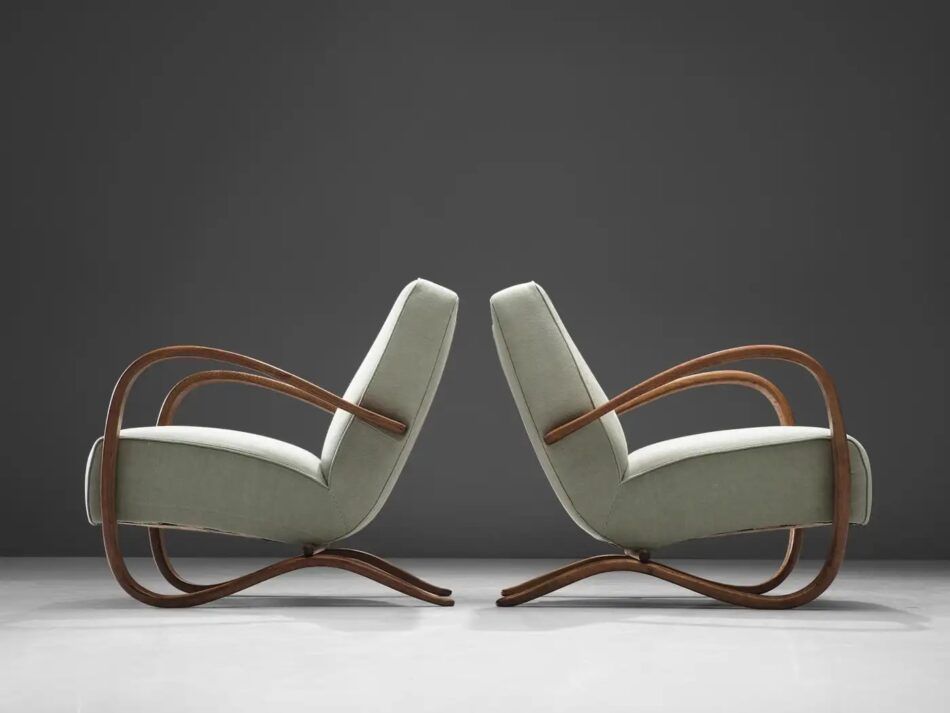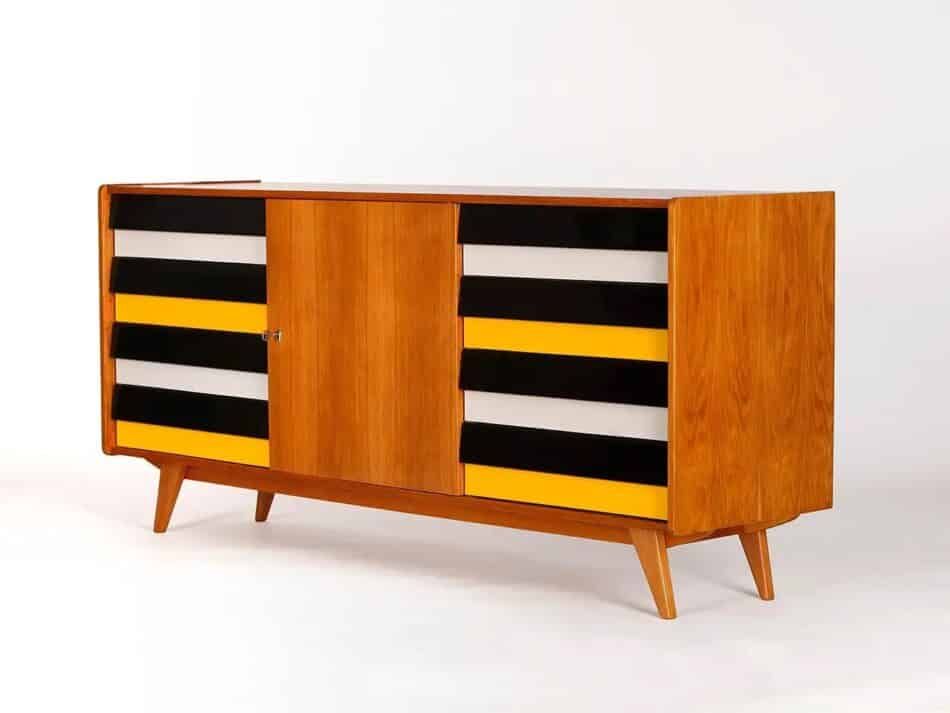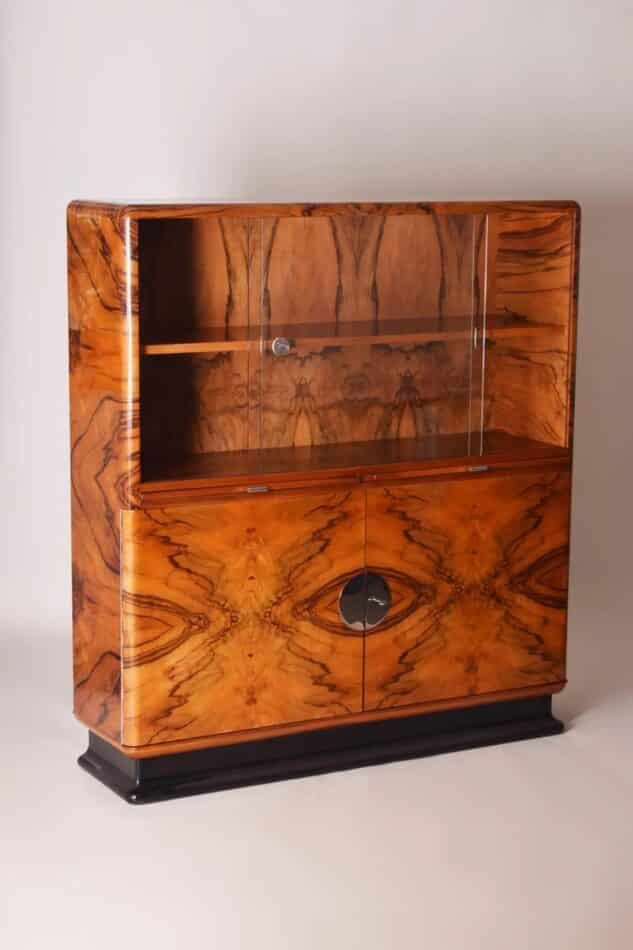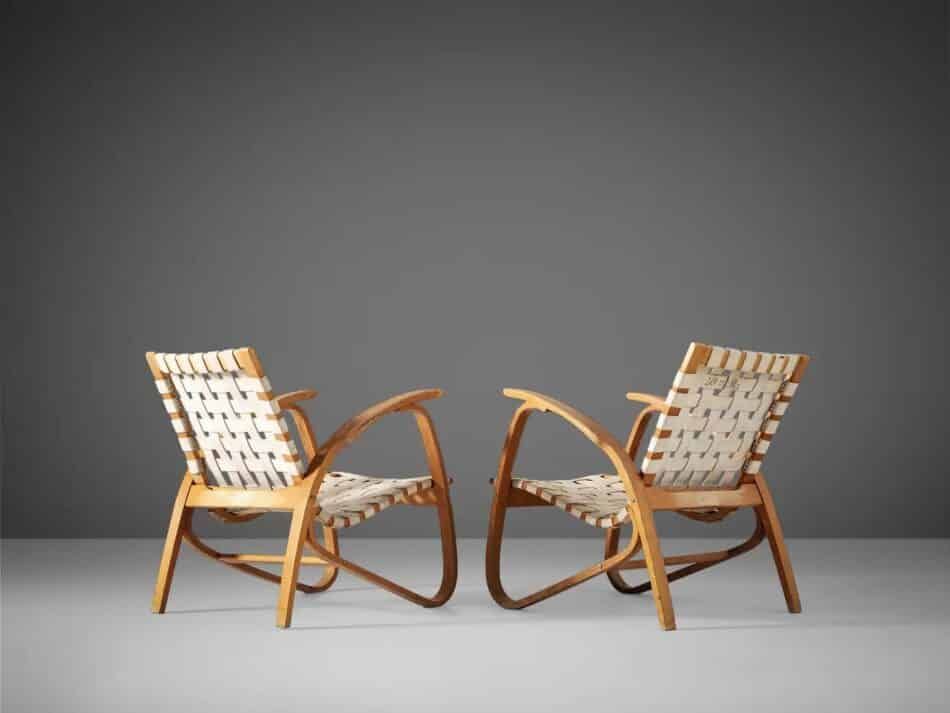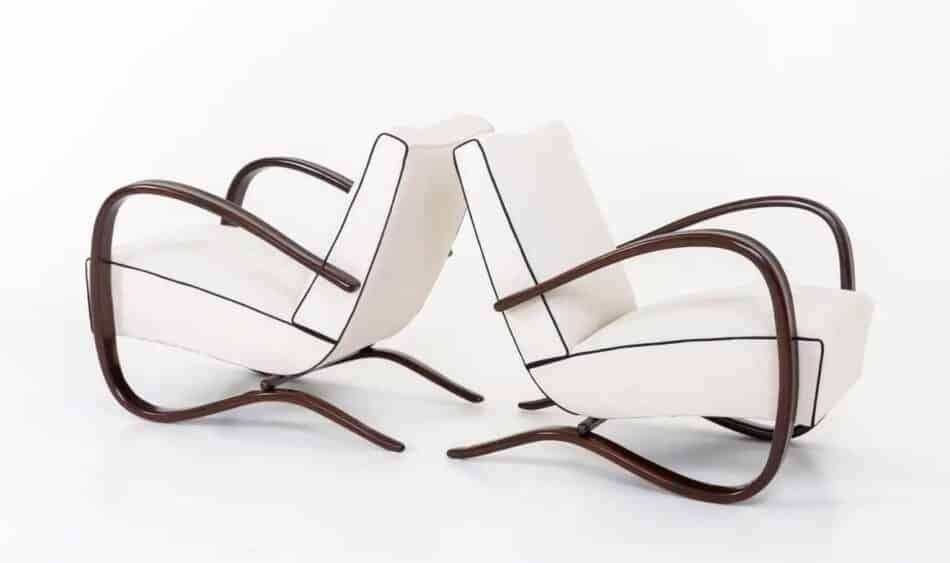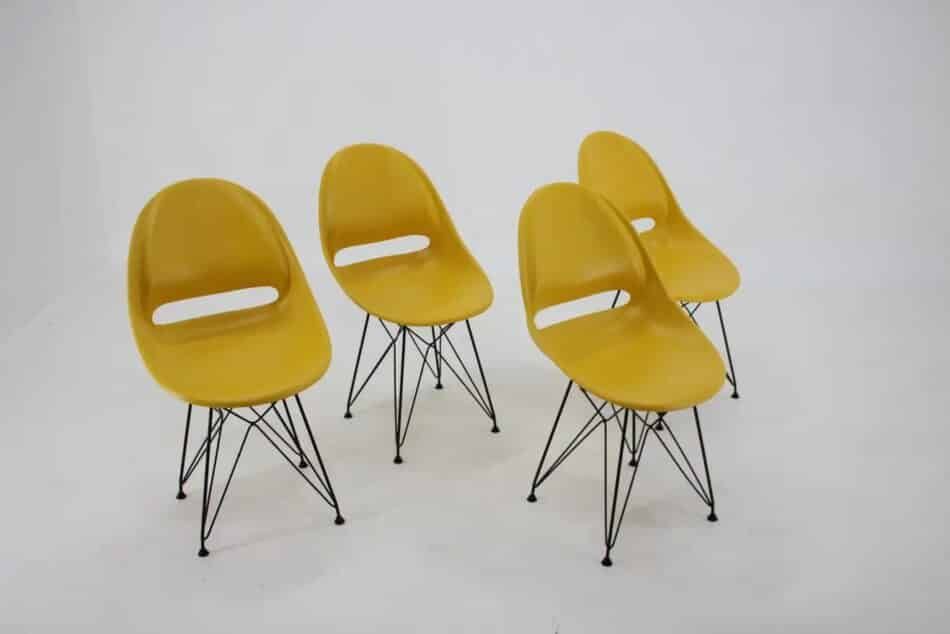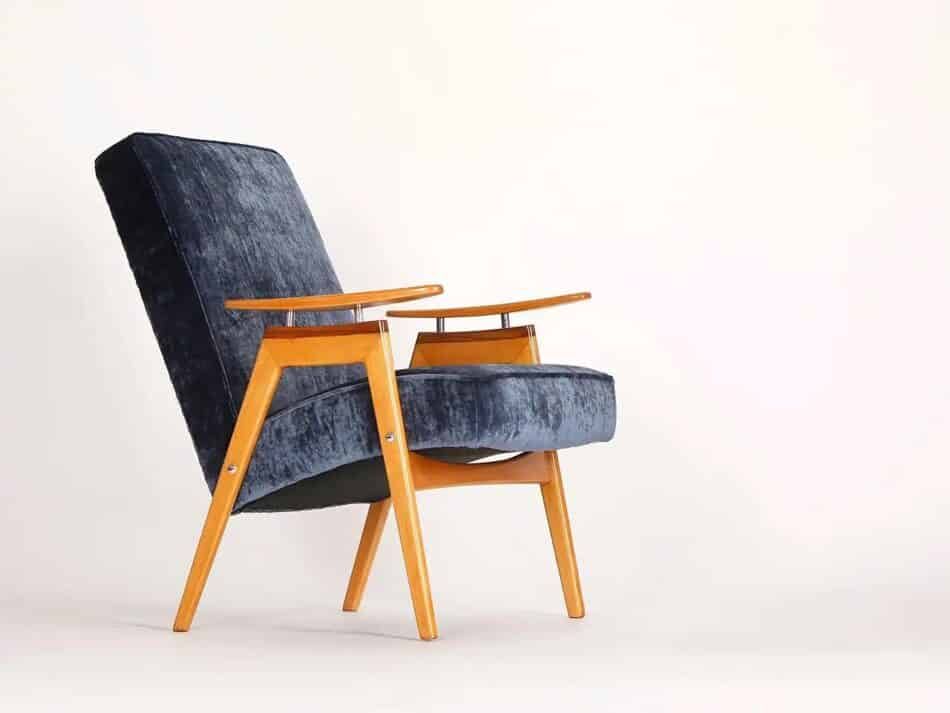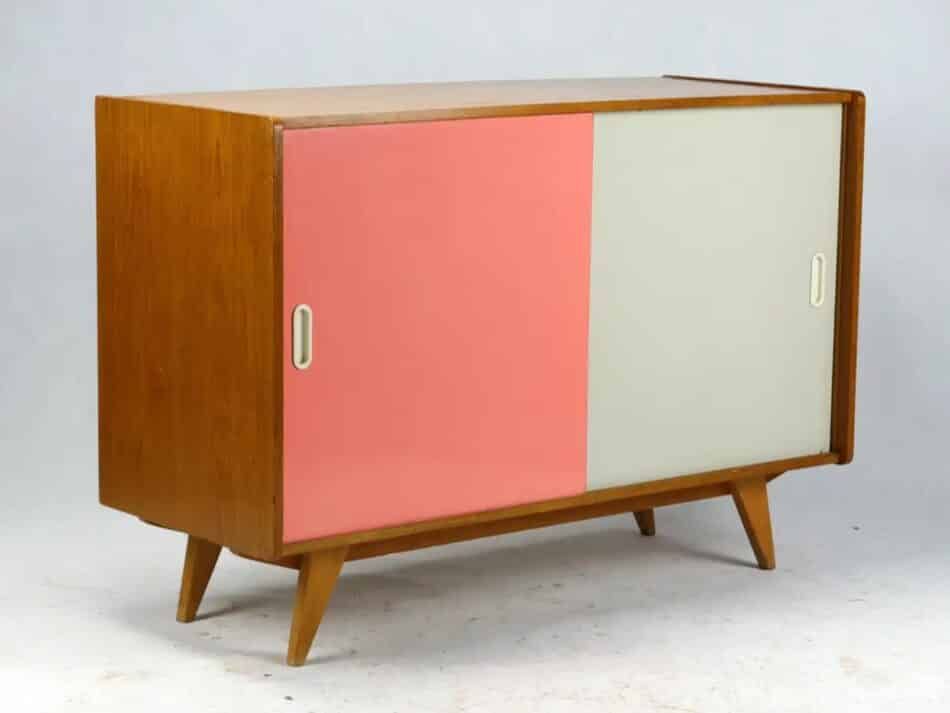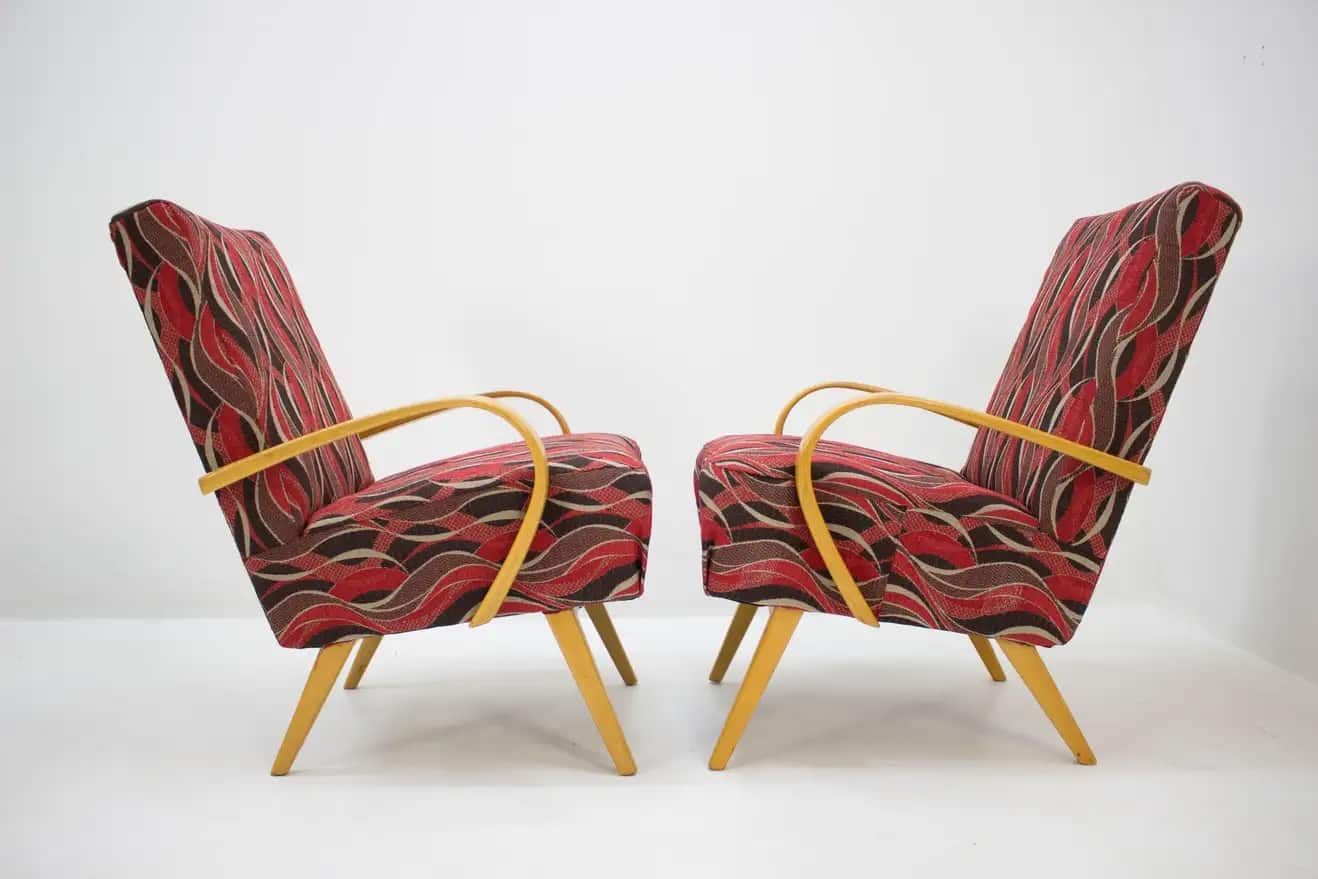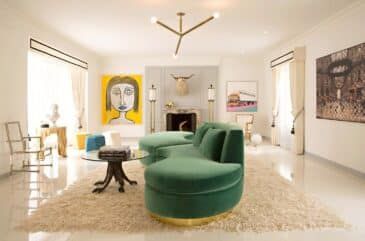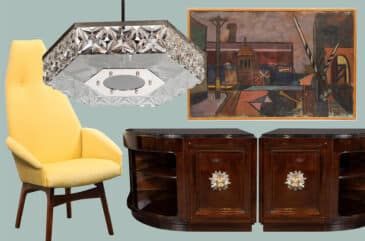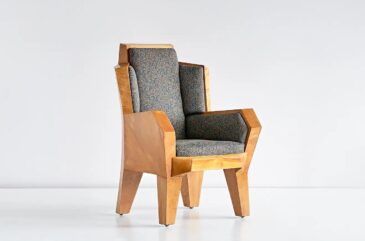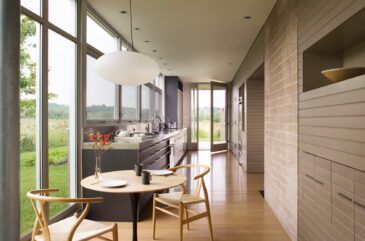For much of the 20th century, industrial and furniture designers in the Eastern Bloc created their work in near anonymity — including in the former Czechoslovakia, where communist ideologies ran counter to capitalist ideas like branding and acclaim.
Although for a brief and shining moment, in 1958, the country’s designers gained global renown when Czechoslovakia won best national pavilion at the Brussels World’s Fair, their artistry was soon shrouded again behind the Iron Curtain.
Now, however, thanks to design lovers’ abiding passion for Art Deco and mid-century modern furniture, and the increasingly competitive market for pieces by more famous creators, 20th-century Czech designers are making their way back onto the international stage. In the process, the influence their ingenuity had on Western design is sparking a long-overdue appreciation for their work.
The specific cultural demands of a communist country both literally and figuratively shaped the projects designers could produce, explains 1stDibs art and design research specialist Antje Linck. They were asked not to design artistically but to create furniture for the volk, or ordinary people. Pieces were expected to last, says Linck, and to be “versatile, easy to reproduce and functional but also elegant and well designed.”
The clear Bauhaus influence that suffuses the work of some of the more prominent designers, Linck notes, is hardly surprising. After all, “the famous Bauhaus is located in the East German part of Germany, which was under Communist occupation for 40 years,” she points out.
Overall, Czech Art Deco and mid-century modern designs tend to be more sober than their French, German, American or Scandinavian counterparts. While form and decoration played a role, innovation and artistry took a backseat to factors like functionality and ease of production. “Anyone who wanted to stand out — it wasn’t a good idea. You got yourself in trouble,” Linck says.
Still, looking back, many did stand out, creating designs that have proved not only beautiful and inspired but enduring.
Jan Vanek, 1891–1962
Elegance describes the designs of Jan Vanek. Influenced by his family’s furniture company, he studied woodworking. Following a stint in Germany, where he advanced his skills at established firms in Munich, Stuttgart and Heilbronn, he returned home and took over the family business, which in 1920 became known as Spojené Uměleckoprůmyslové Závody, or UP Závody.
His early friendships and collaborations with architectural and design greats like Walter Gropius, Le Corbusier, Ludwig Mies van der Rohe, Adolf Loos and others likely had much to do with his graceful style, best exemplified by his 1930s bentwood chairs, with the arabesque curves of their arms and legs conjoining to form open, dynamic loops.
True to Czech standards for uniformity, Vanek scarcely altered the design over decades of production, though he did gradually modernize his frames: His 1950s models are more angular, industrialized — and very definitely modern.
Jindrich Halabala, 1903–78
Foremost among 20th-century Czech talents is Jindrich Halabala, a cabinetmaker’s son whose training was almost wholly focused on woodwork, first at a state-run vocational school for woodworking in Valašské Meziříčí and later at UP Závody in Brno, where he ultimately became chief designer.
His curvaceous bentwood H chairs, such as the H269 and H237, and stylized Art Deco ottomans have become classics, while his 1930s and 1940s sofas, tables and cabinets, with their sweeping curves, stylized geometry and dark, richly grained wood, embody the best of Art Deco design.
Some see his work as the segue between early 1900s Czech Cubism and the modern style that dominated the mid-century.
Miroslav Navratil, 1913–99
In contrast to Halabala’s aesthetic, the work of Miroslav Navratil rocketed into the Space Age. Although he also studied at the furniture school in Valašské Meziříčí, as well as the Czech State Industrial School in Brno, Navratil took an interest in new materials and forms.
Working at the Czech studio Vývoj Nábytkářského Průmyslu (VNP), he created the design for which he is best known: his iconic 1959 fiberglass chair, produced by Vertex. While it was initially intended for the home, a version of the Vertex chair, colored a bright, cheerful blue, was ubiquitous for decades as the seating in Soviet trams.
Jaroslav Smidek, 1923–2005
The son of a furniture dealer and upholsterer, Jaroslav Smidek, like Vanek and Halabala, was born into the trade. Growing up, he helped out in the family workshop, where he learned his father’s craft.
Although he trained as an architect, he quickly turned to industrial design, developing Montisektor furnishings, a line of pieces that could be assembled at home from prefabricated parts, in 1956 for VNP — a significant advance in Czech furniture production.
But it is his chairs, such as those he created for Jitona in the 1960s, that are most in demand. While they carry a Scandinavian touch, there is no mistaking the gentle elegance of their uniquely Eastern European aesthetic.
Jiri Jiroutek, circa 1928–
Few designers anywhere have created pieces that more distinctly shout mid-century modern than Jiri Jiroutek. Even as a young designer, Jiroutek reenvisioned the fabrication and functionality not only of cabinets and kitchen furnishings but also interior architecture.
However, it was the 1958 Brussels World’s Fair that ultimately inspired the funky, colorful, decorative yet multifunctional U-450 cabinets of the late ’50s and early ’60s that made him a leading figure in the so-called Czech Brussels school.
His influence didn’t stop there. After revising an Ikea prototype design at the firm’s request in 1958, Jiroutek received an invitation from Ikea founder Ingvar Kamprad to join the company in Stockholm. The designs he created there in the late 1960s, as well as others inspired by his work at the renowned manufacturer Interiér Praha, remain Ikea best sellers to this day.
